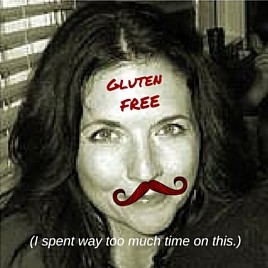I talk a LOT about Insulin Resistance and I realized recently that some of the blank stares I get from my audience may indicate that many don’t really know what it is and/or they think that it doesn’t apply to them. It’s like one of those –
“Ya, ya, ya – I hear insulin – so this must have something to do with Diabetes – and I don’t have Diabetes, so let’s move on. Insert eye roll – snooze emojis.”
However, Insulin Resistance effects more than half of the US population (according to JAMA in 2015) – and that number doesn’t include those with JUST Insulin Resistance – who have yet to officially be diagnosed with Pre-Diabetes and Diabetes…so the impact of Insulin Resistance on the population is really much much higher!
WHAT IS INSULIN RESISTANCE?
When blood sugar (glucose) levels rise – usually from carbohydrate intake and/or stress, insulin – a growth and storage hormone – is released by the pancreas to ultimately bring blood glucose down. It does this by packaging and shuttling the excess glucose into cells (muscle, liver and eventually fat cells).’ This is all normal and necessary for energy utilization and blood sugar balance.
What can happen in some individuals, is the receptors on the cells start to tune out (resist) the insulin signals. The insulin has the sugar (glucose) all packaged up and ready to deliver to the cells, but the cells are ignoring the delivery, so the glucose in the blood stays elevated (hyperglycemia – hyper=too much, glyc=sugar, emia=present). The pancreas then sends out even more insulin to get that blood sugar down. This is Insulin Resistance which causes hyperinsulinemia (hyper = too much – insulin – emia = present) which leads to all sorts of metabolic issues.
EFFECTS OF INSULIN RESISTANCE
Insulin is an anabolic hormone – meaning it helps things grow. In the case of strength training, insulin is critical for muscle building, but if you’re not lifting weights or otherwise exerting yourself, insulin will shove the excess glucose into our fat cells for safe keeping. And just to be doubly safe, it will also send signals to shut down fat burning (lipolysis = lipo=fat, lysis = dissolve) so that the stored blood sugar doesn’t get recirculated.
Great! :/
So one of the tell tale signs of insulin resistance is weight gain or weight loss resistance. From a health perspective, this is a better option for the body than dying from hyperglycemia, but it’s not what most people want. And the down stream impact of being overweight and obese along with poor blood sugar regulation is a slippery slope because this effects hunger hormones, increases lethargy and increases other metabolic risk factors. This is (hopefully!) where some in-tune practitioners will start talking to you about Pre-Diabetes and Diabetes risk which increases risks for cardiovascular disease, stroke, kidney failure, infection, blindness, neuropathy, dementia and Alzheimers.
HOW TO TEST
Other than weight and symptoms, a simple blood test of fasting blood glucose, Hemoglobin A1C and fasting insulin are fairly good markers to determine insulin resistance and diabetes risk. There are other markers too, so work with your functional medicine practitioner to determine what’s appropriate for you.
FASTING BLOOD GLUCOSE
- Pre-diabetes: ≥ 100-125 mg/dL (5.6 – 6.9 mmol/L) < 80-95 would be an ideal range for many
- Type 2 diabetes: > 126 mg/dL (7.0 mmol/L)
H-A1C
- Pre-diabetes: 5.7-6.4% < Ideally low 5s or high 4s
- Type 2 diabetes: ≥ 6.5%
FASTING INSULIN
- Optimal range: 1- 9 μU/mL < most functional medicine practitioners like this no higher than 5
- Intermediate risk range: 10 -11 μU/mL
- High risk range: ≥ 12 μU/mL
HOW TO FIX IT
The three biggest levers to reverse insulin resistance and even improve diabetes status include:
- Reduce carbohydrates in the diet – Eat real food sources of carbohydrates only (fruit and starches) and find your “carbohydrate sweet spot”. This can be anywhere from 0 – 4 servings of real food carbohydrates per day depending on the person and their level of activity. I find 1 or 2 servings works for most people with insulin resistance (who aren’t keto). This would be something like a cup of berries and/or a half a sweet potato. Have as many non-starchy veggies as you’d like such as greens, cruciferous veggies, celery, cucumber, onions, garlic, etc..and plenty of non-sweet fruits like avocado, peppers and tomatoes.
- Manage stress – Stress will raise cortisol which will raise blood sugar which will raise insulin. Yes, stress makes people fat! Practice deep breathing, yoga, walking in nature, meditation, prayer, rest, etc… and be sure to get good quality sleep since sleep deprivation is a stress to the body.
- Move everyday – Exercise, in the right dose, can balance blood glucose and improve Insulin Sensitivity (which is what we want!). Just be sure to not overdo it as this will increase the stress response (see #2 above). Aim to move throughout the day and do some sort of interval or strength training, stretching and/or light walking each day.
People always ask me about supplements and I always say ‘nail down the diet and lifestyle stuff first’, but there’s one supplement that’s well studied for managing blood sugar: Berberine. It’s done very well in comparison to Metformin in clinical trials. Here’s an absorbable form of Berberine you may want to experiment with. Just be sure to discuss with your doctor, especially if you’re on diabetes medication. Bonus, Berberine is also a mild antimicrobial which can help improve gut health too!
SOooo that’s Insulin Resistance in a nutshell! I hope this helped you understand some of the complexities of our physiology and gives you some ideas to help you and your loved ones prevent or reverse it. Please reach out with any questions or to share your experience with Insulin Resistance or diabetes. I’d love to hear your story!
xo,
Ev





2 thoughts on “Insulin Resistance – What is it? Do you have it? How to fix it.”
Thank you Ev – excellent information and easy to understand you broke it all down perfectly! ♥️
Thank you, Joan! Such an important topic <3
xo,
Ev